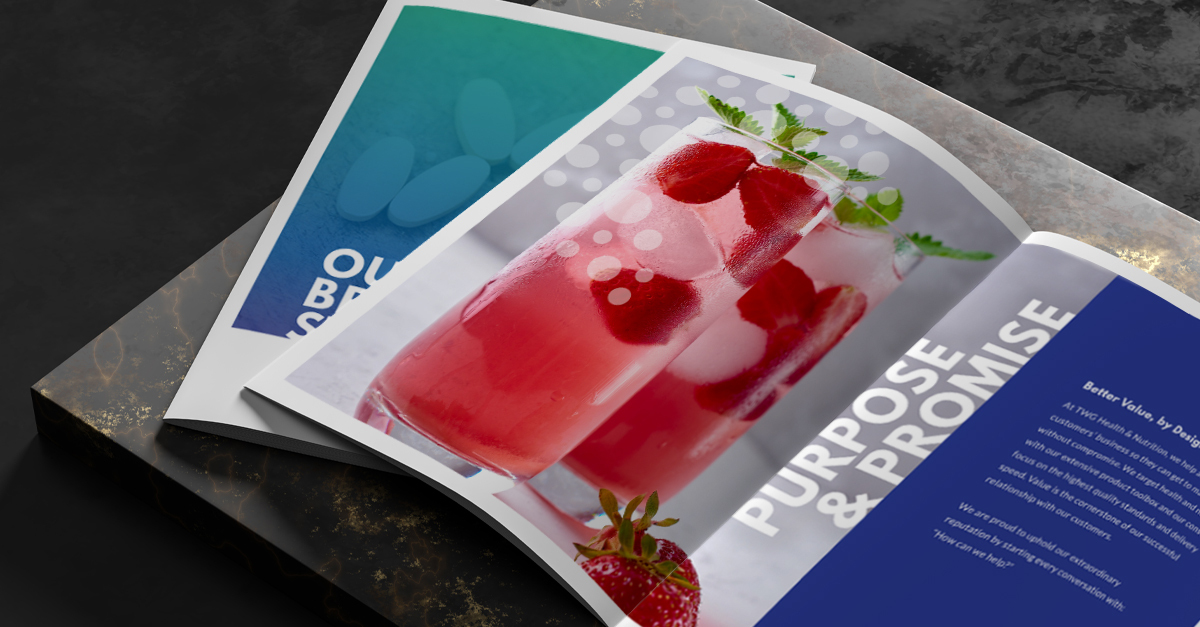Brand storytelling is essential to build customer trust and communicate product benefits and services in a simple yet exciting way. While storytelling is more common in B2C marketing, B2B brands can use storytelling elements to their advantage when working to differentiate themselves from their competitors.
What is storytelling in advertising?
According to HubSpot, “Storytelling is an incredibly valuable tool for you to add to your proverbial marketing tool belt.” Hubspot also calls storytelling an art that resonates with people and grabs their attention.
You gain trust and credibility by speaking your ideal customer’s language and identifying their needs and challenges. This type of storytelling can create and build customer relationships that lead them to discover, learn and eventually buy into your brand.
Why is storytelling essential for your brand?
There are five crucial reasons why your brand should use storytelling to create impactful marketing that drives leads.
1. Stories are easy to remember
Brands have a significant platform in today’s modern marketplace and can have a tremendous impact with effective storytelling. When thousands of eblasts are sent out daily and every company is constantly posting on social media to grab their attention, brands are expected to stay relevant and present more than ever. In fact, in his book, Actual Minds, Possible Worlds, Psychologist Jerome Bruner stated that the human mind is about 22 times more likely to remember facts if those facts are part of a story.
When telling stories, unique details about your brand’s products or services will help the customer remember your company. For instance, if you have a relevant story to tell about ingredient sourcing, be sure to highlight that throughout your messaging. Why is that important to potential customers?
A Nielsen report found that 81% of millennials expect their favorite companies to declare their corporate citizenship publicly. So it’s important to know who your audience is and what their buying strategies are.
2. Stories simplify complex messages
Storytelling can convey the message in ways your reader will actually understand when explaining a new concept or complex idea. For example, a case study could be filled with blocks of text and numerous stats. However, implementing useful graphs or charts instead of simply listing the data could be one way you use storytelling.
When writing copy, consider ways in which information can be better understood visually.
3. Stories connect customers
Consistent storytelling and brand messaging align your customers. Take a look at successful brands who approach all of their messaging as a way to inspire, educate and connect customers around the globe.
A brand that does this well is Airbnb. They weave stories into everything they market, showing other brands in various industries just how powerful the feeling of human connection is. On their host page, they feature success stories from hosts who have made Airbnb a place to make a living, share their beautiful homes or retreats and even expand their business.
This guides users and aspiring hosts to learn how Airbnb has impacted real people. A way to accomplish this with your own brand is to implement a testimonials page where customers, vendors and other partners can help share your success stories.
LinkedIn also has its very own Success Hub with customer stories. They feature numerous customer case studies about how LinkedIn Marketing solutions help their brand discover and achieve their goals.
4. Good stories inspire action
Brand management has evolved as more and more platforms and possibilities open up to the modern consumer. As a result, it’s essential to stay consistent when speaking to customers on various platforms and to ensure they’re left feeling like your product or services are worth investing in.
When looking to inspire action, ask yourself the following questions:
- Who is my ideal audience/customer?
- What action do I want my customer to take? Do I want them to buy something, read my article, or reach out to learn more about my brand?
- What does my ideal customer want or need?
The answers to these questions bring you closer to understanding your customer. It’s important to understand it’s not only about what you want to sell them; they’re searching for ways your business can solve their problems or give them their desired outcome.
5. Customers will tell your story for you
All good interactions are sharable at the click of a button. If your story is good, your customers will repeat it. They’ll repost your efforts on social media, share with their network via word of mouth and advocate for your brand.
Similar to user-generated content, customers who vocalize their support share your message in ways you couldn’t otherwise accomplish with paid promotions.
Having that trust and loyalty is necessary for long-term growth and success! And, it’s easily fostered when you have a genuine story to share with the world.
To learn more about how influencer marketing can help you drive your brand story, check out our Campfire case study.
How do you tell a good story?
It depends on the medium, but a good story can be told everywhere. Whether it’s a powerful headline or a technical product data sheet, your brand’s authentic look and feel, as well as messaging, helps create the foundation for your story.
Many good stories follow a similar structure. Here are the critical storytelling elements you can use in your messages going forward:
Strong introduction or hook: This gets your audience interested in what you’re about to say.
Suspense in the middle: For longer pieces of content, you want to make sure you don’t lose your reader. To keep them interested, you need to include relevant information or use a technique called suspense to draw them in.
Brevity when needed: If the content is shorter, such as an eblast or a social post, use concise and straightforward language instead of ‘fluff.’ Fluff is any unnecessary information that does not apply to the main topic of the content. If you’re hoping the reader will visit you at the upcoming trade show, focus only on what you’ll offer, such as prototypes, demonstrations and featured equipment. Additional topics unrelated to the theme will lose your reader before they reach the end.
A compelling conclusion: wrap up with a summary of key points and end with a clear call to action (CTA). The CTA inspires engagement, which is exactly what we want at the end of any marketing asset!
Where is storytelling effective?
While storytelling is significant throughout your brand’s messaging, it can be specifically effective in these four common assets:
- Video: From words displayed on the screen to imagery, video storytelling has become a key tool for marketing, sales and other teams. Short video clips grab attention and can engage audiences more than stagnant content. The use of audio or music can further illustrate the message you’re hoping to send to your customers.
- Ad campaigns: With a clear central and consistent message, ad campaigns are great storytelling assets that increase brand exposure. They drive customers to engage with your brand or get to know it better.
- Brand stories: While these are typically an internal resource, this asset helps align your marketing efforts from creative to sales. It’s an excellent resource for team members to share a consistent brand message when creating externally facing marketing.
- Social media: From short video testimonials to posts about recent trends, customers who rely on social media for news and updates often refer to any company updates on their favorite platforms.
Brand storytelling is an art form that not only increases brand exposure, it can gain customer loyalty and attract your ideal audience. If you’re looking to take your brand storytelling marketing to the next level, choose an agency that’s an extension of your team. At ColinKurtis Advertising, you’ll work with a dedicated team specializing in brand storytelling for the ingredient, food, beverage, health and nutrition industries. Contact Mitch Robinson at Mitch@colinkurtis.com or call 815-965-6657 EXT. 1 to learn how your brand can use storytelling to your advantage.
Blog post from:
Debra Tucker
Vice President, Creative Director


Leave A Comment